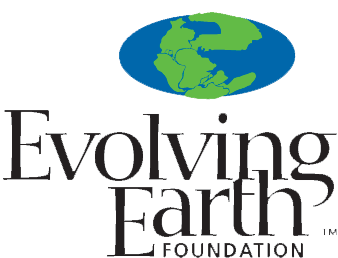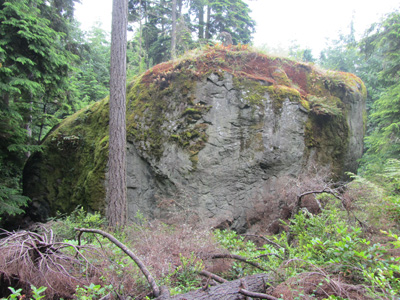Congratulations to the following 2010 Evolving Earth Student Grant recipients:
Beverly, Emily
Rutgers University Foundation
“Using lake margin sediments for the paleoclimatic and paleoenvironmental reconstruction of a hominin-rich early Pleistocene time-slice: Olduvai Gorge, Tanzania”
The Plio-Pleistocene Sediments of paleo Lake Olduvai contain a rich record of the paleolandscape, but the diversity of lake margin environments is often overlooked in existing large-scale reconstructions. The sediments in upper bed I have revealed hominins and associated cultural material along with an abundance of faunal remains, but few insights can be made without more detailed research. A high-resolution study of the sediments (including paleosols) in a time-slice across the lake margin will build on the existing paleoclimate data, place it within the global climate context, and give geologic context to archaeological sites.
Cotton, Jennifer
University of Michigan
“Derivation of a new soil respired CO2 proxy for application to paleo-CO2 reconstruction”
I will travel to Arizona to collect pedogenic carbonates from a modern soil climosequence to validate a new soil respired CO2 relationship derived from an extensive literature review. This soil respired CO2 proxy will remove uncertainty from the pedogenic carbonate paleobarometer, increasing precision of atmospheric paleo-CO2 estimates and paleoclimatic reconstructions.
Lindsay, Emily
The Regents of the University of California
“Causes, dynamics and ecological consequences of late-Quaternary extinctions in tropical South America”
This project integrates geological, paleoecological and archaeological data to test for anthropogenic and environmentally-caused impacts on Pleistocene megafauna and analyze short – and long-term changes in late-Quaternary ecological communities in the coastal neotropics. Investigations will be conducted at Sitio Tanque Loma, a late-Pleistocene tar seep deposit on the southern Ecuadorian coast. Specific analyses will include geological and taphnomic studies to determine site formation, evaluation of archaeological and paleontological evidence to investigate claims that this site was a megafaunal butchering locality; and combining biostratigraphic, paleobotanical and 14C analyses to understand late-quaternary paleoecological changes in this region. This project is an integral part of my dissertation research, which seeks to clarify the timing and dynamics of the Pleistocene extinction event in South America in order to better inform modern conservation decisions.
Maguire, Kaitlin Clare
The Regents of the University of California
“Niche dynamics if mammals from the Mascall Formation (Miocene), John Day Basin, Oregon”
This project investigates the climatic niche and distributional dynamics of mammals during a period of climate change in the Miocene. Specifically, I will investigate whether species maintain their climatic tolerances (niche stability) or change them (niche evolution) as their environment changes. This project will be conducted using the robust paleontological and paleoclimatic resources of the John Day Basin in Oregon. Species distributions and climatic niches will be reconstructed using climatic envelope models to determine whether species change their distributions and niches in the face of climate change and if so, at what rate does change occur. Results drawn from this project will inform conservation decisions today by shedding light on how species have responded to past global and local climate change.
McHugh, Julia Beth
The University of Iowa
“Temnospondyli (Vertebrata Choanata) Ontogeny and Phylogeny as a Window to Terrestrial Ecosystems During the Permian-Triassic Mass Extinction”
This project will ascertain the response of an extinct amphibian clade, Temnospondyli, to the Permian-Triassic (P/T) mass extinction event through a morphological species-level phylogenetic analysis and bone microstructure analyses of interspecific variation in growth patterns and rates with respect to the P/T event and phylogeny. Trends in growth and stratigraphic occurrences data will be correlated with phylogeny to determine phylogenetic trends in ontogeny across the P/T event as well as patterns of extinction and origination among temnospondyls. These results will be compared with similar research currently being undertaken on therapsids (“mammal-like reptiles”) that were also abundant during this interval to assess the inter-clade selective pressures influencing terrestrial life during the largest mass extinction event in the fossil record.
Michel, Lauren
Baylor University/Geology Department
“Paleoclimate reconstructions using soils from Early Miocene Proconsul sites on Rusinga Island, Kenya”
Rusinga Island, Kenya is known for the world class ancestral primate fossils Proconsul and Limnopithecus that are found in the Early Miocene volcanoclastic deposits. Since the discovery of these primates, many scientists have attempted paleoecological reconstructions of the coeval climate with often conflicting results. This study attempts to determine climate and ecological habit of the Early Miocene on Rusinga through a multidisciplinary approach that will use both qualitative and quantitative proxies. The fossils on Rusinga are known to occur with fossil soils (paleosols) which may preserve climate signals in their morphology, micromorphology and through stable isotopes of the soil forming minerals such as clays. This study proposes to use all these proxies to determine climate and habitat of the Early Miocene deposits on Rusinga Island.
Prentice, Adelina
University of Washington
“Investigating Pliocene warm-weather upwelling (“permanent El Nino condition”) in littoral communities of Peru, southern California, and Baja California, Mexico”
The goal of this investigation is to track the change from the warm water, “permanent El Nino condition” of the mid-Pliocene to the initiation of cold water upwelling along the eastern Pacific margin by studying the structures and geochemical record of rocky shore beach paleocommunities. I am proposing to investigate fossiliferous outcrops in southern California, in the Pliocene San Diego and Imperial Formations, to collect fossil assemblage samples. I will also conduct geochemical analyses on the fossils to track temperature and productivity changes through the Pliocene. I have started this project in Peru, and have done community analyses on those assemblages and will also conduct geochemical analyses on the fossils collected there. The information gathered from this study will help to understand how coastal communities deal with temperature changes in their living environment.
Tackett, Lydia
University of Southern California
“Determining the Differential Biotic Response to the Chicxulub and Manicouagan Impact Events Implications for Mass Extinctions and Biostratigraphy”
The goals of this research project are to establish a faunal assemblage sequence of Late Triassic marine paleoecology in northwest Nevada to better understand the biotic effects of the Manicouagan bolide impact, which produced the second largest confirmed impact crater of the Phanerozoic. No evidence for environmental effects or a biotic response to this catastrophic event has yet been identified, despite the massive size of the impact event, either due to problems in the predictive power of impact research, or to a lack of temporal resolution for the Late Triassic, particularly for eastern Panthalassic sections. This study will further characterize the way organisms and communities respond to major environmental perturbations, and our results would be the first correlation event with Panthalassic marine biostratigraphic zones and an absolute date of the Norian, a 25 m.y. period in late Triassic.
Wayman, Matthew
Kent State University
“Using Calcium Isotopes in Marine Barite to Construct a High-Resolution Record of Seawater in the Mid-Miocene”
The major goal of this proposed research is to reconstruct a high-resolution record of the variations of the seawater calcium (Ca) isotope ration over the Mid-Miocene (18 – 12 Ma) using marine barite samples from at least two deep sea sediment cores from the equatorial Pacific Ocean collected by the Ocean Drilling Program and the Deep Sea Drilling Project. This record will be used as a proxy for carbonate deposition, which will further elucidate changes in seawater chemistry over time as well as alterations in global biogeochemical cycles, thus providing a better understanding of both paleoenvironment and paleoclimate.
White, Sarah
University of California, Davis
“High-resolution climate “windows” from Santa Barbara Basin: Investigation of Quaternary rapid climate shifts”
I will address these questions: 1) How do changing orbital parameters over the past 1 Ma influence characteristics of Quaternary rapid warming events? and 2) What are the consequences of rapid warming, including changes in ocean circulation, productivity and oxygenation? I will analyze 3 Santa Barbara Basin cores, which span 2 millennial-scale oscillations at ~325 and ~700 ka that occur during and after a shift in orbital parameters (the transition into the “100 ka world”). I will analyze core samples for oxygen isotope of surface, thermocline, and benthic foraminifera and planktonic and benthic faunal assemblages. I will compare these data to the lamination/bioturbation of the core sediments which was documented shipboard.

